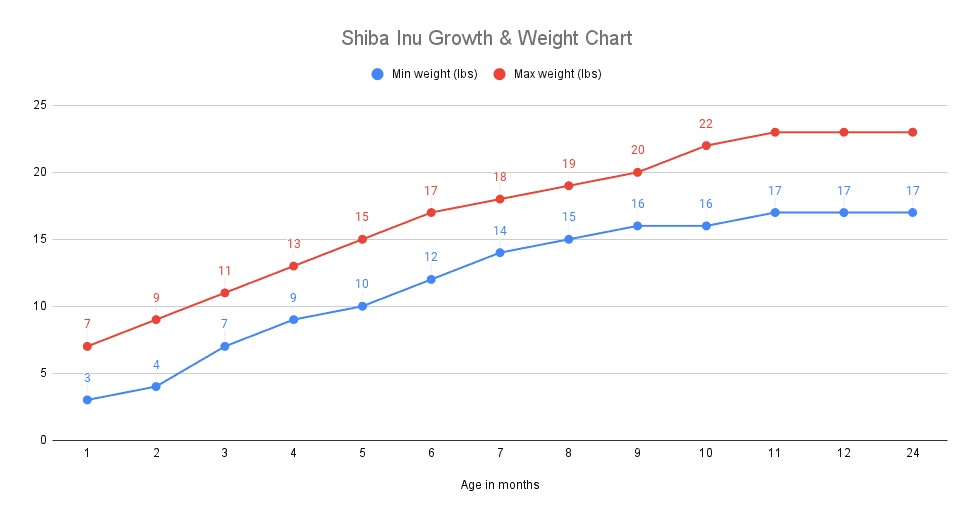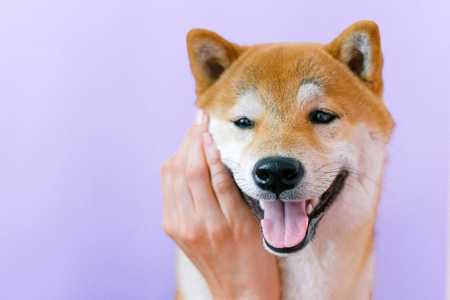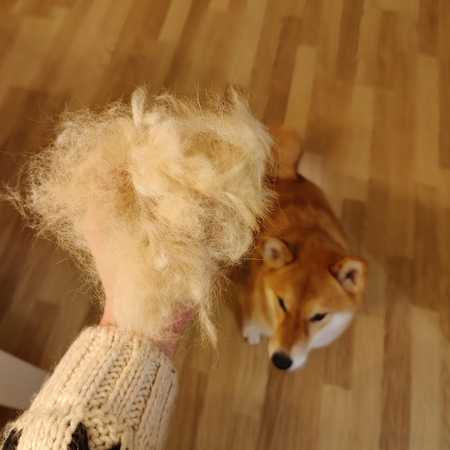Shiba inu: weight and growth chart
The Shiba Inu is a muscular, well-balanced dog that was originally used as a hunting companion to flush out birds and small game in Japan. They are also the smallest of the six Spitz breeds native to Japan, with ancestors dating back to 7000 BC. The Shiba Inu is best known for its distinct curled tail and alert fox-like muzzle.
The breed is well adapted to long treks through trails and mountainous terrain, making them excellent hiking companions! If you're the lucky parent of a charming Shiba Inu puppy, maybe you've also wondered how much my Shiba Inu weighs as an adult and when it will stop growing?
Depending on sex, the Shiba Inu weighs between 8 and 11 kg (17 and 24 lbs) as an adult, with a height between 34 and 42 cm (13 and 16 inches).
The Shiba Inu growth curve

Shiba Inu dogs in photos may sometimes look larger than they are because of their compact, muscular bodies, but their weight and height place them in the small to medium dog breed category.
Unlike many dog breeds, there is no noticeable difference between male and female Shiba Inus in adult weight and height.
The numbers in the chart are estimates. Do not worry if your puppy is slightly behind or ahead of the average. However, if you believe your puppy is significantly smaller or larger than the average Shiba Inu weight, consult your veterinarian to assess your dog's size and health.
Data source: pawlicy
At what age do Shiba Inu stop growing?
Shiba Inu dogs have intense growth spurts that typically happen between 3 and 7 months of age. During these growth months, they will double in size before slowing down around 8 months of age to a slower growth rate that they will maintain until they reach their full size around one year of age.
Most Shiba Inus will be considered adults by 12 months in terms of height and weight. However, larger dogs may take up to 18 months to reach their full size.
Shiba Inus stop growing around one year old. If your pet is less than one year old, expect it to continue growing. Most breed members end their growth by eight months of age and will gradually decrease growth from 12 to 18 months of age until they are fully mature.
If your Shiba Inu comes from a breeder, consider contacting them for a more accurate estimate of adult size based on your puppy's parents and their previous litters. A puppy will rarely be larger than its older parent, so this also provides a maximum size estimate.
Finally, take a look at your Shiba puppy's legs. Do they appear out of proportion near the legs and body? If so, this is a classic puppy characteristic that indicates your puppy is still growing.

How to keep a Shiba Inu in shape
Shiba Inus are loyal companions who deserve a long, happy and healthy life. Unfortunately, like all breeds, Shiba Inus are prone to some genetic health problems. Although this cannot be changed, appropriate preventive measures and a healthy lifestyle can have a huge positive impact on your Shiba Inu's quality of life and risk of developing health problems.
Generally, Shiba Inus are more prone to eye problems, such as cataracts or dystichiasis, which occur when extra hair grows inside the eyelid and rubs against the surface of the eye. They are also prone to joint and bone problems, such as kneecaps slipping out of place (luxating patella) or hip dysplasia.
All of these can cause pain and even disability if left untreated. Fortunately, many of the genetic conditions to which Shiba Inus are prone can be observed, diagnosed and treated by your puppy's veterinarian, which is why it is important to visit the vet regularly.
Here are the general rules for keeping your dog healthy:
- Keep his weight under control
- Get daily physical activity, at least one hour a day
- Use quality food, with a balanced and nutritious diet
- Visit the vet regularly, at least once or twice a year
- Get vaccinations against life-threatening diseases such as distemper, parvo, panleukopenia and rabies
- Use pesticides

Regarding weight, Shiba Inus have a higher risk of obesity than other dogs. Their thick fur and naturally stocky stature can hide weight gain well but cause serious health problems. Obesity can lead to excessive pressure on bones and joints, which can cause or exacerbate some of the genetic conditions previously noted. Consult your veterinarian about your Shiba Inu's ideal diet, exercise and weight to get the best medically informed care plan for your puppy.
Unfortunately, as overweight is becoming the new norm for humans, obesity in pets is becoming normalized by pet owners.
According to a study conducted by Purina, obesity reduces a dog's life expectancy by about two years. So, as in humans, the longer the dog is overweight, the less life it will have.
If for us one kilogram more or less does not make much difference, but rather fluctuations in weight are normal, for the dog one kilogram more or less makes a lot of difference. This, of course is more pronounced on small dogs such as Shiba Inu.
Being overweight puts a strain on the animal's musculoskeletal system. But not only that, here are the most common problems that can occur
- Respiratory difficulties and respiratory illness
- Decreased endurance and exercise intolerance
- Insulin resistance, which can cause diabetes and other metabolic syndromes
- Heat intolerance
- Heart disease
- Liver dysfunction or disease
- Difficulty walking
- Arthrosis, especially in the hips
- Impaired immune response
- Increased risk of developing fatty and malignant tumors (cancer)
- Convulsions
- Kidney disease
- Skin diseases
- Thyroid problems
- Orthopedic problems, cranial cruciate ligament injuries
If you don't know whether your Shiba Inu is simply super fluffy or overweight, the best way to assess his health status is to take him to the vet.
Between visits, however, you can tell visually and manually if your pet weighs too much.
Regardless of breed, to tell if your dog is not overweight, you should be able to feel the ribs without much fat on them.
How to weigh your dog at home
If you are using your bathroom scale, place it on a hard, flat surface, preferably the floor. The scale works best this way and you eliminate the risk of your dog falling off a high surface.
For very small dogs, such as Shiba Inu, you may want to use a baby scale because even a quarter or half pound of weight loss or gain can be significant when your dog's total weight is less than ten pounds.
If your dog does not like to be picked up and held, do not force him to be weighed this way.
The easiest way to weigh your dog is:
- Weigh yourself and record your weight
- Pick up your dog and step on the scale, then record the weight
- Subtract from the second weight (yours plus the dog's) your weight (which you recorded earlier)
What to do if your dog doesn't like to be weighed
The instability of a scale scares many dogs, particularly if they were already nervous about being at the vet. If possible, start weighing your dog regularly when he is a puppy and always praise him with your voice and a tasty treat after he has been on the scale.
Regardless of your dog's age, you can use clicker training to teach him that weighing should not be a source of stress.
In this case, the training is very simple. You will need to reward your dog whenever he takes an action in the right direction to be weighed. So click and reward him for sniffing the scale, then for placing a foot on it, and finally when he is sitting or standing on the scale for an accurate weighing.
Disclosure: Please note that some of the links below may be affiliate links, from which I'll earn a commission at no additional cost to you. When you use one of my affiliate links, the company will compensates me, which helps me run this blog and keep all of my in-depth content free of charge for readers like you.

